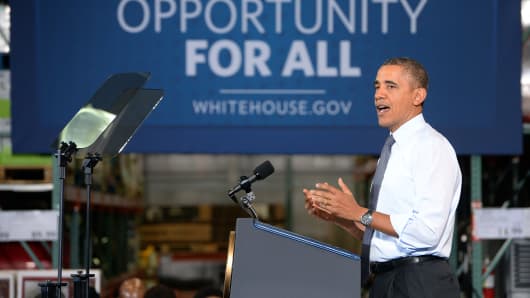There's little debate that wages for the average American household have stalled and wealth is flowing more heavily to the top of the income ladder.
There's less consensus about why—and what should be done about it.
A new study analyzing more than three decades of wage data argues that government polices—more than globalization, new technologies or gaps in education or training—go a long way to explaining the expanding wealth gap in America.
"There's a lot of uncertainty about the rise in inequality, but we've changed a lot of government policies over the last generation that have pretty predictable effects on wages," said co-author Josh Bivens, policy director at the Economic Policy Institute, a Washington think tank devoted to helping low and middle income households.
Read MoreLow-wage jobs crowding out fatter paychecks
Those policies have become a key focus of the Obama administration, which is proposing an increase in the federal minimum wage—to $10.10 an hour from the current $7.25—as part of a broader agenda of boosting pay checks for lower and middle-income households.
The new paper, being unveiled Wednesday at an event featuring Labor Secretary Thomas Perez, is the opening salvo in an EPI research campaign to focus on wage inequality.
At the root of the debate is a question economists have sought to explain for decades: the abrupt disconnect in the late 1970s between the overall productivity of the U.S. economy and wage gains for the average worker.





